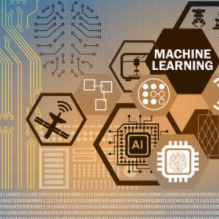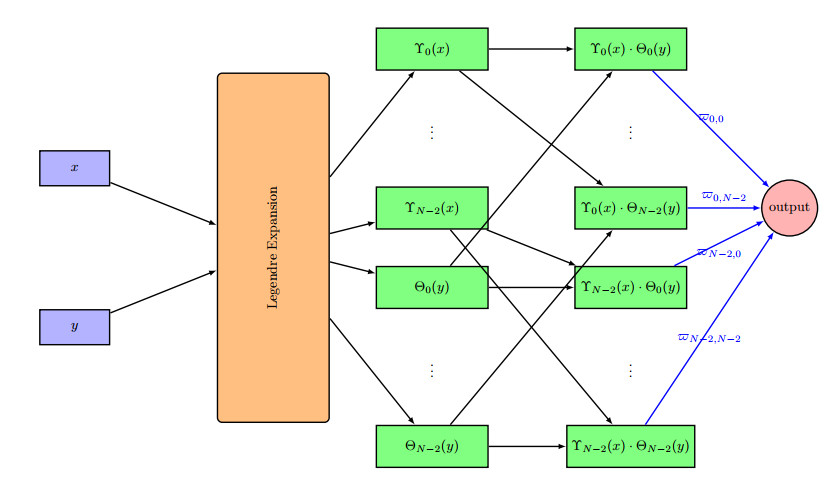|
[1]
|
Y. Pinchover, J. Rubinstein, An Introduction to Partial Differential Equations, Cambridge University Press, 2005. https://doi.org/10.1017/CBO9780511801228
|
|
[2]
|
J. Douglas, B. F. Jones, On predictor-corrector methods for nonlinear parabolic differential equations, J. Soc. Ind. Appl. Math., 11 (1963), 195–204. https://doi.org/10.1137/0111015 doi: 10.1137/0111015

|
|
[3]
|
A. Wambecq, Rational Runge-Kutta methods for solving systems of ordinary differential equations, Computing, 20 (1978), 333–342. https://doi.org/10.1007/BF02252381 doi: 10.1007/BF02252381

|
|
[4]
|
J. N. Reddy, An Introduction to the Finite Element Method, McGraw-Hill, 1993.
|
|
[5]
|
R. J. LeVeque, Finite Difference Methods for Ordinary and Partial Differential Equations: Steady-state and Time-dependent Problems, SIAM, 2007. https://doi.org/10.1137/1.9780898717839
|
|
[6]
|
I. E. Lagaris, A. Likas, D. I. Fotiadis, Artificial neural networks for solving ordinary and partial differential equations, IEEE Trans. Neural Networks, 9 (1998), 987–1000. https://doi.org/10.1109/72.712178 doi: 10.1109/72.712178

|
|
[7]
|
S. Mall, S. Chakraverty, Application of Legendre neural network for solving ordinary differential equations, Appl. Soft Comput., 43 (2016), 347–356. https://doi.org/10.1016/j.asoc.2015.10.069 doi: 10.1016/j.asoc.2015.10.069

|
|
[8]
|
T. T. Dufera, Deep neural network for system of ordinary differential equations: Vectorized algorithm and simulation, Mach. Learn. Appl., 5 (2021), 100058. https://doi.org/10.1016/j.mlwa.2021.100058 doi: 10.1016/j.mlwa.2021.100058

|
|
[9]
|
J. A. Rivera, J. M. Taylor, A. J. Omella, D. Pardo, On quadrature rules for solving partial differential equations using neural networks, Comput. Methods Appl. Mech. Eng., 393 (2022), 114710. https://doi.org/10.1016/j.cma.2022.114710 doi: 10.1016/j.cma.2022.114710

|
|
[10]
|
L. S. Tan, Z. Zainuddin, P. Ong, Wavelet neural networks based solutions for elliptic partial differential equations with improved butterfly optimization algorithm training, Appl. Soft Comput., 95 (2020), 106518. https://doi.org/10.1016/j.asoc.2020.106518 doi: 10.1016/j.asoc.2020.106518

|
|
[11]
|
Z. Sabir, S. A. Bhat, M. A. Z. Raja, S. E. Alhazmi, A swarming neural network computing approach to solve the Zika virus model, Eng. Appl. Artif. Intell., 126 (2023), 106924. https://doi.org/10.1016/j.engappai.2023.106924 doi: 10.1016/j.engappai.2023.106924

|
|
[12]
|
M. Raissi, P. Perdikaris, G. E. Karniadakis, Physics-informed neural networks: A deep learning framework for solving forward and inverse problems involving nonlinear partial differential equations, J. Comput. Phys., 378 (2019), 686–707. https://doi.org/10.1016/j.jcp.2018.10.045 doi: 10.1016/j.jcp.2018.10.045

|
|
[13]
|
E. Schiassi, R. Furfaro, C. Leake, M. De Florio, H. Johnston, D. Mortari, Extreme theory of functional connections: A fast physics-informed neural network method for solving ordinary and partial differential equations, Neurocomputing, 457 (2021), 334–356. https://doi.org/10.1016/j.neucom.2021.06.015 doi: 10.1016/j.neucom.2021.06.015

|
|
[14]
|
S. Dong, Z. Li, Local extreme learning machines and domain decomposition for solving linear and nonlinear partial differential equations, Comput. Methods Appl. Mech. Eng., 387 (2021), 114129. https://doi.org/10.1016/j.cma.2021.114129 doi: 10.1016/j.cma.2021.114129

|
|
[15]
|
S. Dong, J. Yang, On computing the hyperparameter of extreme learning machines: Algorithm and application to computational PDEs, and comparison with classical and high-order finite elements, J. Comput. Phys., 463 (2022), 111290. https://doi.org/10.1016/j.jcp.2022.111290 doi: 10.1016/j.jcp.2022.111290

|
|
[16]
|
G. B. Huang, Q. Y. Zhu, C. K. Siew, Extreme learning machine: Theory and applications, Neurocomputing, 70 (2006), 489–501. https://doi.org/10.1016/j.neucom.2005.12.126 doi: 10.1016/j.neucom.2005.12.126

|
|
[17]
|
V. Dwivedi, B. Srinivasan, Physics-informed extreme learning machine (PIELM) – A rapid method for the numerical solution of partial differential equations, Neurocomputing, 391 (2020), 96–118. https://doi.org/10.1016/j.neucom.2019.12.099 doi: 10.1016/j.neucom.2019.12.099

|
|
[18]
|
F. Calabrò, G. Fabiani, C. Siettos, Extreme learning machine collocation for the numerical solution of elliptic PDEs with sharp gradients, Comput. Methods Appl. Mech. Eng., 387 (2021), 114188. https://doi.org/10.1016/j.cma.2021.114188 doi: 10.1016/j.cma.2021.114188

|
|
[19]
|
S. M. Sivalingam, P. Kumar, V. Govindaraj, A Chebyshev neural network-based numerical scheme to solve distributed-order fractional differential equations, Comput. Math. Appl., 164 (2024), 150–165. https://doi.org/10.1016/j.camwa.2024.04.005 doi: 10.1016/j.camwa.2024.04.005

|
|
[20]
|
A. Jafarian, M. Mokhtarpour, D. Baleanu, Artificial neural network approach for a class of fractional ordinary differential equations, Neural Comput. Appl., 28 (2017), 765–773. https://doi.org/10.1007/s00521-015-2104-8 doi: 10.1007/s00521-015-2104-8

|
|
[21]
|
I. Ali, S. U. Khan, A dynamic competition analysis of stochastic fractional differential equation arising in finance via the pseudospectral method, Mathematics, 11 (2023), 1328. https://doi.org/10.3390/math11061328 doi: 10.3390/math11061328

|
|
[22]
|
S. U. Khan, M. Ali, I. Ali, A spectral collocation method for stochastic Volterra integro-differential equations and its error analysis, Adv. Differ. Equ., 2019 (2019), 161. https://doi.org/10.1186/s13662-019-2096-2 doi: 10.1186/s13662-019-2096-2

|
|
[23]
|
I. Ali, S. U. Khan, Dynamics and simulations of stochastic COVID-19 epidemic model using Legendre spectral collocation method, AIMS Math., 8 (2023), 4220–4236. https://doi.org/10.3934/math.2023210 doi: 10.3934/math.2023210

|
|
[24]
|
S. U. Khan, I. Ali, Application of Legendre spectral-collocation method to delay differential and stochastic delay differential equations, AIP Adv., 8 (2018), 035301. https://doi.org/10.1063/1.5016680 doi: 10.1063/1.5016680

|
|
[25]
|
C. Canuto, M. Y. Hussaini, A. Quarteroni, T. A. Zang, Spectral Methods: Fundamentals in Single Domains, Springer, 2006. https://doi.org/10.1007/978-3-540-30726-6
|
|
[26]
|
G. Mastroianni, D. Occorsio, Optimal systems of nodes for Lagrange interpolation on bounded intervals: A survey, J. Comput. Appl. Math., 134 (2001), 325–341. https://doi.org/10.1016/S0377-0427(00)00557-4 doi: 10.1016/S0377-0427(00)00557-4

|
|
[27]
|
D. Gottlieb, S. A. Orszag, Numerical Analysis of Spectral Methods: Theory and Applications, SIAM, 1977. https://doi.org/10.1137/1.9781611970425
|
|
[28]
|
J. P. Boyd, Chebyshev and Fourier Spectral Methods, Dover Publications, 2001.
|
|
[29]
|
J. S. Hesthaven, S. Gottlieb, D. Gottlieb, Spectral Methods for Time-dependent Problems, Cambridge University Press, 2007. https://doi.org/10.1017/CBO9780511618352
|
|
[30]
|
C. Canuto, M. Y. Hussaini, A. Quarteroni, T. A. Zang, Spectral Methods in Fluid Dynamics, Springer, 2012. https://doi.org/10.1007/978-3-642-84108-8
|
|
[31]
|
J. Shen, T. Tang, L. L. Wang, Spectral Methods: Algorithms, Analysis and Aapplications, Springer, 2011. https://doi.org/10.1007/978-3-540-71041-7
|
|
[32]
|
N. Liu, Theory and Applications and Legendre Polynomials and Wavelets, Ph.D thesis, The University of Toledo, 2008.
|
|
[33]
|
S. Wang, X. Yu, P. Perdikaris, When and why PINNs fail to train: A neural tangent kernel perspective, J. Comput. Phys., 449 (2022), 110768. https://doi.org/10.1016/j.jcp.2021.110768 doi: 10.1016/j.jcp.2021.110768

|
|
[34]
|
P. Yin, S. Ling, W. Ying, Chebyshev spectral neural networks for solving partial differential equations, preprint, arXiv: 2407.03347.
|
|
[35]
|
Y. Yang, M. Hou, H. Sun, T. Zhang, F. Weng, J. Luo, Neural network algorithm based on Legendre improved extreme learning machine for solving elliptic partial differential equations, Soft Comput., 24 (2020), 1083–1096. https://doi.org/10.1007/s00500-019-03944-1 doi: 10.1007/s00500-019-03944-1

|
|
[36]
|
M. Xia, X. Li, Q. Shen, T. Chou, Learning unbounded-domain spatiotemporal differential equations using adaptive spectral methods, J. Appl. Math. Comput., 70, (2024), 4395–4421. https://doi.org/10.1007/s12190-024-02131-2 doi: 10.1007/s12190-024-02131-2

|
|
[37]
|
Y. Ye, Y. Li, H. Fan, X. Liu, H. Zhang, SLeNN-ELM: A shifted Legendre neural network method for fractional delay differential equations based on extreme learning machine, Netw. Heterog. Media, 18 (2023), 494–512. https://doi.org/10.3934/nhm.2023020 doi: 10.3934/nhm.2023020

|
|
[38]
|
Y. Yang, M. Hou, J. Luo, A novel improved extreme learning machine algorithm in solving ordinary differential equations by Legendre neural network methods, Adv. Differ. Equ., 2018 (2018), 469. https://doi.org/10.1186/s13662-018-1927-x doi: 10.1186/s13662-018-1927-x

|
|
[39]
|
Y. Wang, S. Dong, An extreme learning machine-based method for computational PDEs in higher dimensions, Comput. Methods Appl. Mech. Eng., 418 (2024), 116578. https://doi.org/10.1016/j.cma.2023.116578 doi: 10.1016/j.cma.2023.116578

|
|
[40]
|
D. Yuan, W. Liu, Y. Ge, G. Cui, L. Shi, F. Cao, Artificial neural networks for solving elliptic differential equations with boundary layer, Math. Methods Appl. Sci., 45 (2022), 6583–6598. https://doi.org/10.1002/mma.8192 doi: 10.1002/mma.8192

|
|
[41]
|
H. Liu, B. Xing, Z. Wang, L. Li, Legendre neural network method for several classes of singularly perturbed differential equations based on mapping and piecewise optimization technology, Neural Process. Lett., 51 (2020), 2891–2913. https://doi.org/10.1007/s11063-020-10232-9 doi: 10.1007/s11063-020-10232-9

|
|
[42]
|
X. Li, J. Wu, X. Tai, J. Xu, Y. Wang, Solving a class of multi-scale elliptic PDEs by Fourier-based mixed physics-informed neural networks, J. Comput. Phys., 508 (2024), 113012. https://doi.org/10.1016/j.jcp.2024.113012 doi: 10.1016/j.jcp.2024.113012

|
|
[43]
|
S. Zhang, J. Deng, X. Li, Z. Zhao, J. Wu, W. Li, et al., Solving the one-dimensional vertical suspended sediment mixing equation with arbitrary eddy diffusivity profiles using temporal normalized physics-informed neural networks, Phys. Fluids, 36 (2024), 017132. https://doi.org/10.1063/5.0179223 doi: 10.1063/5.0179223

|
|
[44]
|
X. Li, J. Deng, J. Wu, S. Zhang, W. Li, Y. Wang, Physics-informed neural networks with soft and hard boundary constraints for solving advection-diffusion equations using Fourier expansions, Comput. Math. Appl., 159 (2024), 60–75. https://doi.org/10.1016/j.camwa.2024.01.021 doi: 10.1016/j.camwa.2024.01.021

|
|
[45]
|
X. Li, J. Wu, L. Zhang, X. Tai, Solving a class of high-order elliptic PDEs using deep neural networks based on its coupled scheme, Mathematics, 10 (2022), 4186. https://doi.org/10.3390/math10224186 doi: 10.3390/math10224186

|
|
[46]
|
X. Li, J. Wu, Y. Huang, Z. Ding, X. Tai, L. Liu, et al., Augmented physics informed extreme learning machine to solve the biharmonic equations via Fourier expansions, preprint, arXiv: 2310.13947.
|
|
[47]
|
Z. Fu, W. Xu, S. Liu, Physics-informed kernel function neural networks for solving partial differential equations, Neural Networks, 172 (2024), 106098. https://doi.org/10.1016/j.neunet.2024.106098 doi: 10.1016/j.neunet.2024.106098

|
|
[48]
|
J. Bai, G. Liu, A. Gupta, L. Alzubaidi, X. Feng, Y. Gu, Physics-informed radial basis network (PIRBN): A local approximating neural network for solving nonlinear partial differential equations, Comput. Methods Appl. Mech. Eng., 415 (2023), 116290. https://doi.org/10.1016/j.cma.2023.116290 doi: 10.1016/j.cma.2023.116290

|
|
[49]
|
A. Paszke, S. Gross, S. Chintala, G. Chanan, E. Yang, Z. DeVito, et al., Automatic differentiation in PyTorch, in NIPS 2017 Workshop on Autodiff, (2017), 1–4.
|
|
[50]
|
D. P. Kingma, J. Ba, Adam: A method for stochastic optimization, preprint, arXiv: 1412.6980.
|






















 DownLoad:
DownLoad: